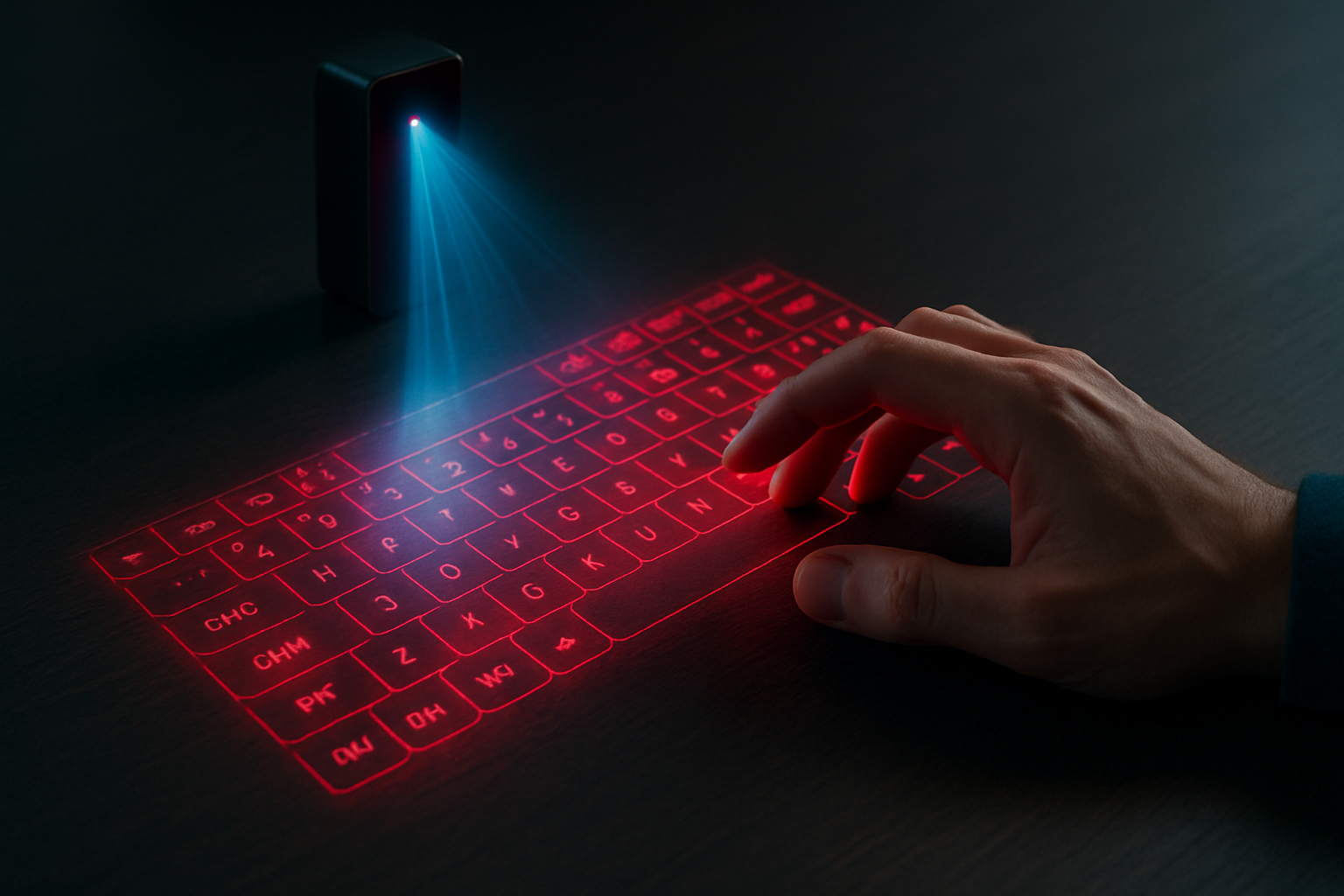Holographic Keyboards: Typing in Thin Air
In the ever-evolving landscape of computer peripherals, a futuristic input device is quietly making waves. Holographic keyboards, once relegated to the realm of science fiction, are now emerging as a potential game-changer in how we interact with our devices. This cutting-edge technology promises to revolutionize typing, offering a blend of convenience, portability, and a touch of technological magic that's hard to ignore.

This technology eliminates the need for physical keys, allowing for a completely flat and portable input device. Users can type on a desk, table, or even their lap, with the keyboard appearing and disappearing at the touch of a button. The lack of moving parts also means these keyboards are potentially more durable and resistant to damage from spills or debris.
The Technology Behind the Magic
At the heart of holographic keyboards lies a complex interplay of optics, sensors, and software. The projection system uses advanced laser technology to create a crisp, visible image of the keyboard, even in various lighting conditions. This is no small feat, as the projection needs to be clear enough for accurate typing while not being so bright as to cause eye strain.
The real magic, however, happens with the sensing technology. Most holographic keyboards use a combination of infrared and camera sensors to track finger movements. When a user “presses” a key, the infrared beam is broken, and the camera captures the position. Sophisticated algorithms then interpret this data to determine which key was pressed.
Some advanced models are even incorporating haptic feedback, using ultrasound waves to create the sensation of pressing physical keys. This addresses one of the main criticisms of early holographic keyboards – the lack of tactile feedback.
Current Market and Future Prospects
While still in its early stages, the holographic keyboard market is showing promising growth. Several companies, including tech giants and innovative startups, are investing in this technology. Current models range from simple smartphone accessories to more advanced standalone devices compatible with multiple platforms.
Price points vary widely, from budget-friendly options around $50 to high-end models exceeding $200. As with any emerging technology, early adopters can expect to pay a premium, but prices are likely to decrease as the technology becomes more mainstream.
Market analysts predict significant growth in this sector over the next five years, driven by increasing demand for portable, space-saving input devices. The global holographic display market, which includes holographic keyboards, is expected to reach $11.65 billion by 2028, according to a report by Grand View Research.
Advantages and Challenges
Holographic keyboards offer several potential advantages over traditional keyboards. Their portability is unmatched – when not in use, they take up virtually no space. This makes them ideal for mobile workers, travelers, or anyone with limited desk space. They’re also potentially more hygienic, as there are no physical keys to harbor germs.
However, the technology faces several challenges. Accuracy remains a concern, with some users reporting higher error rates compared to physical keyboards. The lack of tactile feedback, despite advancements in haptic technology, can be a significant adjustment for touch typists. Additionally, power consumption and the need for relatively flat, light-colored surfaces can limit their practicality in some situations.
Real-World Applications
Beyond personal computing, holographic keyboards are finding applications in various fields. In healthcare, they offer a sterile input option for doctors and nurses working in sensitive environments. In public spaces, they could provide a more hygienic alternative to shared keyboards at information kiosks or libraries.
Some forward-thinking companies are even exploring holographic keyboards for virtual and augmented reality applications. Imagine typing in mid-air while fully immersed in a virtual world – a concept that’s closer to reality than one might think.
The Road Ahead
As holographic keyboard technology continues to evolve, we can expect to see improvements in accuracy, haptic feedback, and compatibility. Future iterations may incorporate advanced AI to predict and correct typing errors, or even adapt to individual typing styles.
The integration of holographic keyboards with other emerging technologies, such as augmented reality glasses, could lead to entirely new ways of interacting with our digital world. Picture a future where your keyboard appears wherever you need it, perfectly tailored to your preferences and the task at hand.
While holographic keyboards may not replace traditional keyboards entirely, they represent an exciting step forward in human-computer interaction. As we continue to push the boundaries of what’s possible in technology, these devices serve as a tangible reminder that the future is already here – it’s just not evenly distributed yet.





